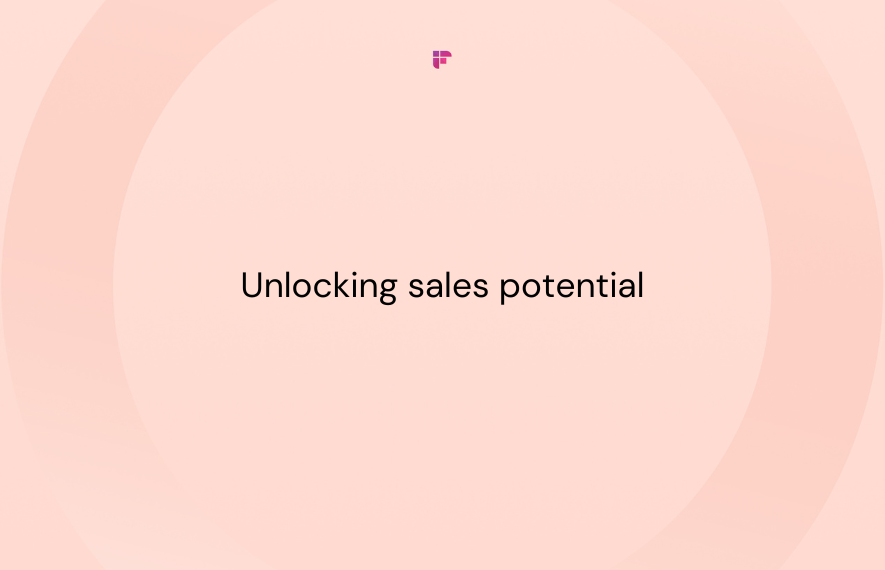B2B sales have evolved drastically over the years. It’s no more about just selling products to generate revenue. Now, it’s more about digging into a prospect’s problems, offering viable solutions, and fostering healthy relationships.
But even after offering great products and curating an elaborate marketing plan, your sales may take a hit. But why?
The answer is that informed customers now dominate the conversation with the sales rep. Today, customers want a comprehensive rundown on the product options available. With internet access at their fingertips, they keep themselves updated with the current market standards, competitions, and options.
- Only 29% of buyers want to talk with a sales rep before purchasing a product/service.
- 54% of buyers make their buying decision before talking to a supplier.
- Also, about 34% of the sales reps admit that closing a deal is becoming harder.
Increasing competition among companies to close the deal has led to immense pressure on the sales reps.
Does all this mean that your time as a sales rep is over?
Of course not!
A Forrester study suggests that the B2B market in the US will hit $10.7 trillion by 2023. When so much money is pouring in, the market shows exponential growth.
But competitions grows with growing market. So, how can you scope out your competitors and win big?
The answer lies in curating a B2B sales growth strategy that addresses the relationship change and growing competition. A comprehensive B2B sales strategy with a critical focus on customers is the key to successful sales.
In this blog, you’ll get an in-depth look into the steps needed to curate a winning B2B sales strategy framework. For better understanding, there will be examples to show the strategy in action.
First, let’s understand what a B2B sales strategy is.
What is a B2B Sales Strategy?

A B2B sales strategy comprises two terms: B2B sales and strategy.
B2B sales: Business-to-business (B2B) is a sales form where a company sells products/services to another company or organization. B2B is more challenging than B2C because the sales rep has to negotiate with large teams of decision-makers. Thus, B2B sales have higher order value and longer sales cycles.
Strategy: A business strategy, as defined by Michael D. Watkins, is:
“A set of guiding principles that, when communicated and adopted in the organization, generates a desired pattern of decision making."
Summing up, we can define B2B sales strategy as:
A set of detailed steps and guidelines a business should follow to sell their products or services to the targeted buyers, which in this case, are other businesses (B2B).
The strategy should be formed in a way that conveys the real value proposition to the buyers in a concise way.
In simple words, your strategy boils down to how your product/ service will make a customer’s work better.
Why is B2B SaaS Sales Strategy Crucial?

When you have a sales strategy, your goals become concrete. A sales strategy serves as a foundation of the entire sales process.
Every sales rep will draw his or her power and vision from this strategy. Further, a sales strategy saves time by curtailing all necessary efforts wasted in chasing futile prospects or leads. It offers a blueprint of success that serves as a lighthouse for future activities.
Even in B2B SaaS, the most important thing is defining the customer/market size. The SaaS market is already competitive; a well thought-out strategy helps communicate why your product has a better value. A SaaS strategy identifies the key areas to increase user base when it comes to customer retention and acquisition.
That’s about the foundation. Now, let’s look at how to create a winning B2B sales growth strategy:
How to Create A B2B Sales Strategy?
1. Research and Define Your B2B Customers
The primary mistake that most B2B companies commit is selling to everyone.
There’s a misconception that; higher the customer base, higher the revenue. But that idea falls flat in real-life. When you’re selling to everyone, you’re selling to no-one, is a common saying in the marketing world. And that’s why more than 50% of the prospects aren’t even a fit for your product.
Invest time and effort in investigating your prospect's needs. The more understanding you develop, the stronger the relationship will become, and the higher your credibility.
As IDC puts it, “The buyer journey is nothing more than a series of questions that must be answered.”
Narrowing down your customer segment will help you be better prepared in dealing with their needs and queries. This preparedness will make your buyers more receptive to your sales pitch and more likely to close a deal.
Remember, the search for the perfect customer segment demands patience and time. And that’s okay because the market defines the company’s future. Once you have zeroed in on the right segment, create a detailed account of the buyer’s persona.
- What are their everyday problems?
- What does their world look like?
- What are the pain points they struggle with?
- Why is your product/service valuable to them?
2. Analyze the Niche Market
The market encompasses the potential buyers and competitors in your domain.
After defining your ideal customers, it’s critical to analyze the entire market ecosystem. This helps in two ways:
- It gives better insight into how to place your product.
- The sales rep can get the ground report about the available solutions and offer a better value to fit the unique needs.
For instance, if your B2B market is in the IT domain; to evaluate the market, ask yourself these questions:
- How many customers are there in your target region?
- How many in each country?
- Do you have a thousand customers in a single region or just five?
- Which competitors are already there in the market?
- What’s the future of the market? Is it growing, steady, or falling?
Once you find answers to these questions, include them in your sales plan. You can also make suggestions to the collected data based on how your market should be. This process may seem intimidating, but with AI in sales, the data gathering and evaluation become quick.
3. Craft Relevant and Compelling USP
Now you know who to sell and where to sell, the next question is, how will you bring value?
In the previous steps in the B2B sales strategy, you’ve already analyzed the competitors. It’s time to craft your value proposition. If there are products already available in the market, why would the customer buy from you?
Ask yourself these questions:
- Which specific problems are you trying to solve?
- How do you plan to resolve their pain points?
- What combination of products or services are you offering them?
- Why are your products/ services relevant to them?
- Which problem does none of the current products solve?
Asking questions is central to developing a B2B sales growth strategy. The more you ask, the more you are able to get in the customer’s skin. Sitting in a cabin in your office doesn’t help bring new sales until you examine the ground report.
One of the most compelling ways of delivering your value proposition is storytelling.
Donald Miller, in his book Building a StoryBrand, quotes:
“The problem isn’t your product – it’s how you talk about your product.”
Even if you have a perfect product-customer fit, niche market, valuable product, your sales may get diminishing returns. Because if you fail to communicate the value, buyers will move on. Thus, include storytelling while communicating your value proposition.
“If we don’t closely analyze each element of our customers’ story, they’ll sense we don’t care and move on to a competing brand that took time to do the work.” - Donald Miller.
4. Build a Customer Relationship Strategy
The fundamental element in building a strong customer base is trust and loyalty. Sales reps are the spokesperson of a company. If buyers won’t trust a representative, how will they trust their product?
In a world where everyone thinks about profit, becoming your prospect’s trusted advisor is an unfair advantage over reps that focus solely on money.
Ask these questions before finalizing this step in the B2B sales strategy:
- What type of relationship your ideal buyers are willing to maintain?
- What are the prospects’ expectations from the relationship?
- What relationships have you already established?
- How’s the relationship integrated into your business?
- What’s the cost of maintaining these relationships?
B2B Sales Strategy Example:
You can have customer relationships on a variety of levels.
Scenario 1: If you choose to have a less personal relationship, you will extend support only when needed. In this model, after you sell your services/ product, your customer has to implement it independently. But you’ll provide chat support to solve any incoming queries.
Scenario 2: Perhaps you decide to be very personal and interact with the customers at every step. You can set up a support site, or you choose to call every customer once each quarter to find out how they’re doing. You can also opt to be more practical in approach and help customers implement solutions in their business.
5. Devise an Action Blueprint
The above steps serve as a guide to build the foundation of a successful B2B sales strategy. Now, you need to craft a plan to put the strategy into action and achieve your sales goals.
This starts with figuring out the elements that have the maximum influence on your sales process. In short, these elements will be vital in your entire B2B sales strategy. For instance, OKRs, KPIs, key activities, key resources and tasks that you perform are critical in B2B sales.
Key activities: Create an activity plan and list down the critical task you’ll perform. Start figuring out:
- What key activities does this job need?
- Are these activities missing anything?
- What are the activities related to customer relationships?
- What are the activities related to marketing, product development, service teams?
- What are the activities you need to reach more potential customers?
- How will you connect these critical activities for optimum performance?
Based on the type of problem you’re solving, key activities can take different forms.
They can be a one-time task, like creating an onboarding program. Or continuous and long-term follow-up calls to schedule. Remember, assign an action point against each activity to ensure they don’t get limited to paper.
Key resources: Resources are the supply that benefit the action. In business, they propel the entire sales strategy forward. Your resources can be money, time, employees, etc. Just like with the key activities, you need to figure out what is critical.
- Are the critical resources missing?
- What should be done to utilize the resources?
- Is there a way to optimally use the resources?
For instance, while creating a sales follow-up or customer onboarding plan, you need excellent materials like guides and instructions to share with buyers. Or, you may need a competent worker to show the sales demos and present solutions.
By this stage, you’ll get a better understanding of your previous plans. Maybe the resources don't fit the elaborate strategies, and you need to re-access your key activities and market accordingly.
6.Deploy a Sales Target
After you finish the action plan, you need to define where you’ll hit. Just laying out data and hoping it will attract more sales doesn’t work. Remember, hope is not a strategy. You need to build a sales target based on your current customers and potential buyers.
Some common issues occurring due to misalignment:
- Irrelevant KPIs to measure team’s performance.
- No central content library to assist the sales rep during his interaction with the prospects.
- Undefined leads that sales rep fails to close.
Set targets that are specific, measurable, and tangible. For instance:
- How many leads are you planning to develop in each region?
- How many deals are you planning to close in each city?
- What’s the duration granted to achieve these goals?
Create a timeline with how many times you plan to contact a buyer, frequency of follow-ups, and time to close a deal.
People Buy Solutions, Not Product
Philip Kotler says, “The best advertising comes from satisfied customers.”
B2B sales have evolved a lot in recent times. Customers are self-educating themselves before considering a product/ service. Thus, it becomes crucial to create and follow a definitive B2B sales strategy that outlines the critical KPIs, personas, activities, resources, and goals.
Remember, a successful sales strategy ignites word-of-mouth marketing.








